|
Date Acquired
|
2006 |
|
Location Discovered |
Macedonia |
| Material
|
Bronze/Copper Alloy |
|
Dimensions |
23cm long x 10cm wide (largest piece) |
|
Roman Empire |
1st
to 3rd
Century AD |
|
Description |
|
Numerous bronze
fragments from a Roman Cavalry Helmet.
These fragments make up the rim sections and parts of the walls of the
helmet. The fragments also show a ridge that flows around the rear
portion as well as the distinctive double rivet holes consistent with the
mounting of the replaceable hinge for the cheek pieces as well as other
bronze mounting.
You
can clearly see one fragment that forms the ear piece/protector
surrounding one of the ears. This piece has diagonal lines that run
along the edge possible imitating hair strands. Also visible is a
piece of bronze that is believed to have been a hook where the large cheek
pieces or face mask would have latched onto to keep in place. The
remainder of the fragment gently slopes up to where the helmet would
normally have continued. A small rivet hole also exists near this
fragments base, possibly to support the bronze hair decoration to the
helmet.
One segment is actually part of this mounting that would have surrounded
the helmet in a hair like pattern.
The hair strands and swirls are clearly visible and show how intricate the
design would have been. A dotted line pattern is also visible and
would most likely have continued with the hair pattern.
The bronze segments that are intact are in great shape and a beautiful
patina covers the pieces. Numerous other smaller fragments remain as
can be seen in the photos. Unfortunately nothing is known about any larger
pieces of this helmet beyond.
Also found with these helmet fragments was the remains of a spear tip.
This would indicate that they were buried together with the helmet perhaps
in a grave.
These
helmets are believed to have been used for sporting events called the
“Hippika
Gymnasia” which was a sort of sporting event. This
event utilized skill in weapons, spear throwing and numerous other warrior
feats on horse. This was all done with specially decorated armor by the 3rd
Century AD. This
armor would never have been worn for combat, but used in these events
alongside the standard chain
mail/scale mail.
(1)(3)
There are
however more recent opinions that suggest that these helmets were also
utilized in pitched battles much like the later Medieval Knights would
have used full face helmets. These helmets would have looked
fearsome and had a psychological effect on the enemy troops, although the
masks would have been hard to see through due to the small eye holes.
This limited view however was not necessary in a full charge as later
knights mimicked. The
more open and common Cavalry helmets would have been used for patrols
where getting a good view was more important. (2)
View the full helmet examples below to see how some of the style show up
in these fragments.
Click on
Pictures for higher resolution
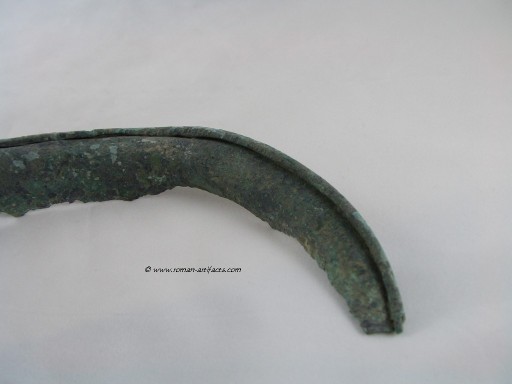
Reverse View of fragment
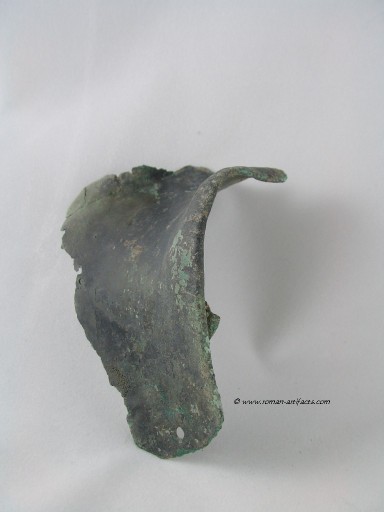
Alternative View of fragment
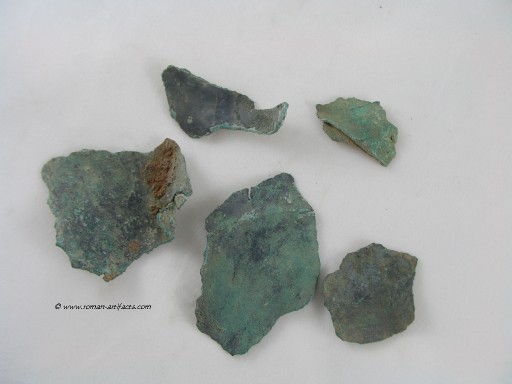
Remaining View of fragment
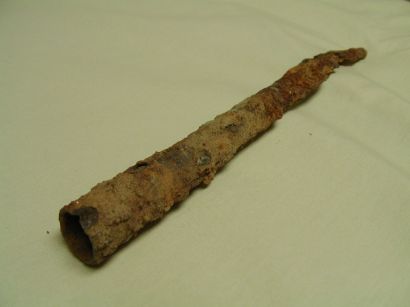
Remains of Spear found
with helmet
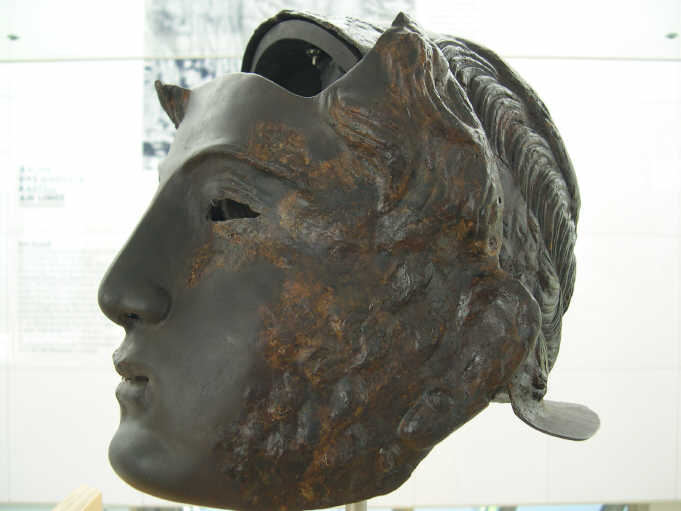
Complete Example with hair
curls
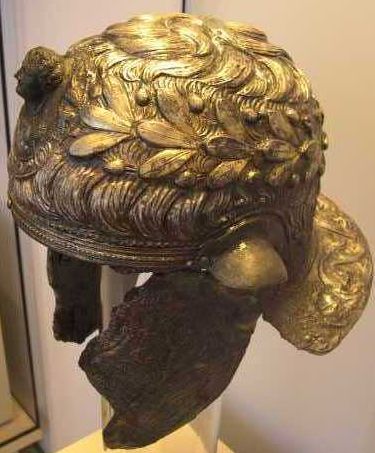
Complete Example with hair
curls and ear covers
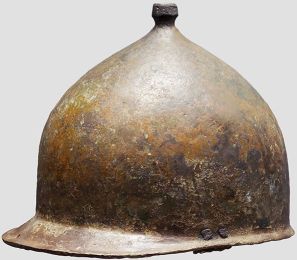
Early Montefortino style with two rivet
holes for cheek pieces. |
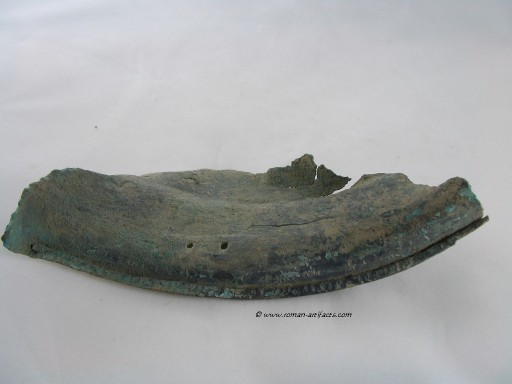
Reverse View of fragment
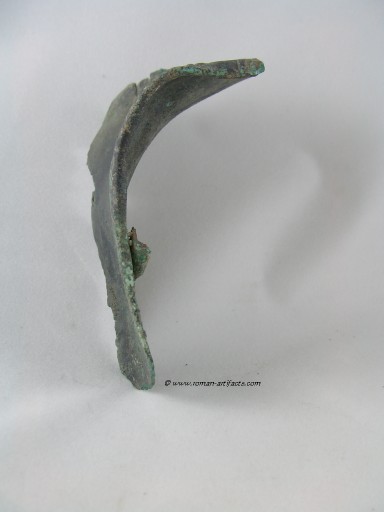
Alternative View of fragment
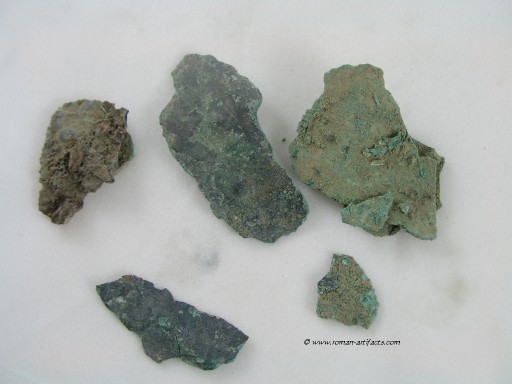
Remaining View of fragment
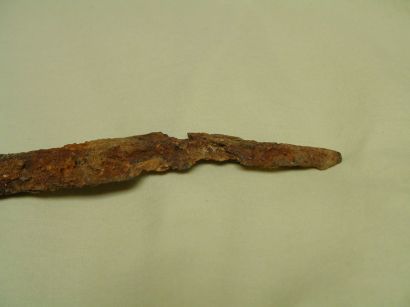
Spear found with helmet
close up View
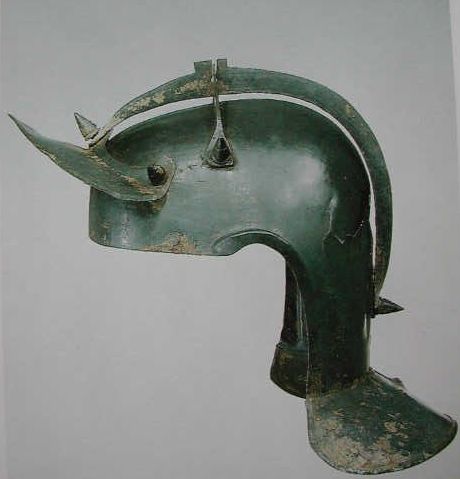
Complete Example with
similar ear covers
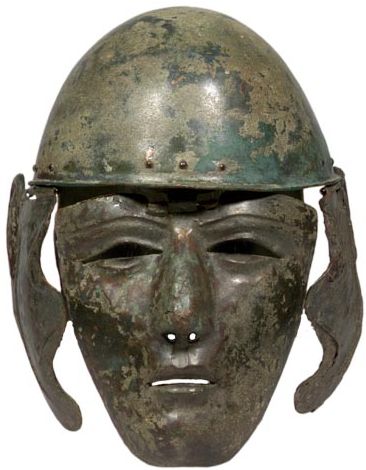
Complete Example showing
rim with rivet holes.
|
| 